Situated in the remote Himalayan region of Ladakh, Zanskar Valley is a treasure trove of Buddhist culture and spirituality. Zanskar’s most remarkable monasteries, each is a testament to centuries of faith and devotion. From the honeycomb-like Phuktal Monastery clinging to a cliffside, to the imposing Karsha Gompa overlooking vast valleys, these spiritual havens offer a glimpse into the region’s rich heritage. Where ancient traditions thrive amidst some of the world’s most breathtaking landscapes, these monasteries are vibrant treasure troves.
10 Zanskar Monasteries
Here is a list of the monasteries in Zanskar that you must visit on your next trip to Ladakh for a memorable experience:
1. Phuktal Monastery
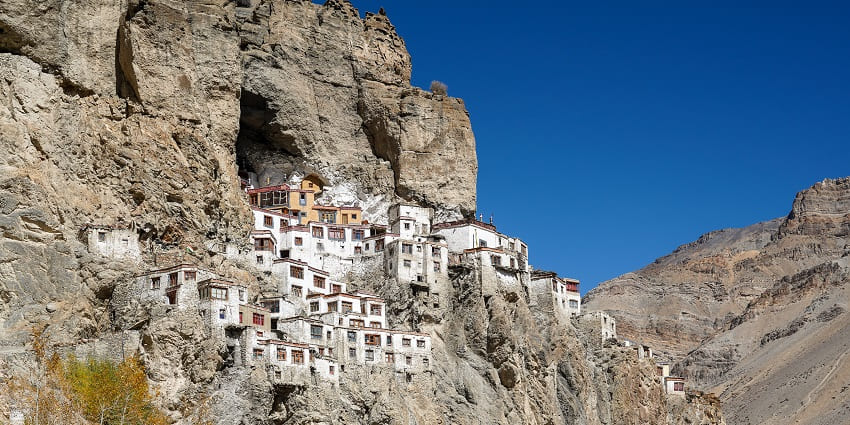
Photo: Timothy A. Gonsalves. / Wikimedia Commons
Phuktal is one of the most spectacular monasteries in Zanskar, if not all of Ladakh. Built around a natural cave on the face of a cliff, it resembles a honeycomb from a distance. Founded in the early 12th century, Phuktal belongs to the Gelugpa school of Tibetan Buddhism. It’s accessible only by foot, requiring a challenging trek through the dramatic landscape of the Lung Nak Valley. The journey itself is part of the experience, offering stunning views of the surrounding mountains and the Tsarap River. Inside, visitors can explore various prayer halls, a library with ancient Buddhist texts.
Distance From Padum (the main town in Zanskar): Approximately 70 km
Suggested Read: Top Places To Visit In Kargil To Explore History And Unveil Adventure
2. Karsha Monastery
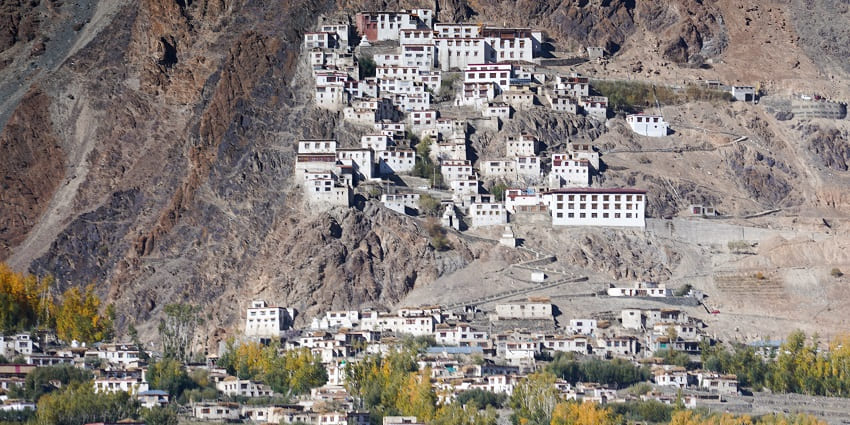
Photo: Timothy A. Gonsalves. / Wikimedia Commons
Karsha Gompa is the largest and most important monastery in Zanskar. Perched on a hillside overlooking the Stod Valley, it presents an imposing sight with its whitewashed buildings cascading down the mountainside. Founded in the 11th century, Karsha belongs to the Gelugpa order of Tibetan Buddhism. The monastery complex consists of several temples, assembly halls, and living quarters for the monks. It’s home to about 100 monks and a school for young lamas.
Distance From Padum: About 10 km
3. Stongdey Monastery
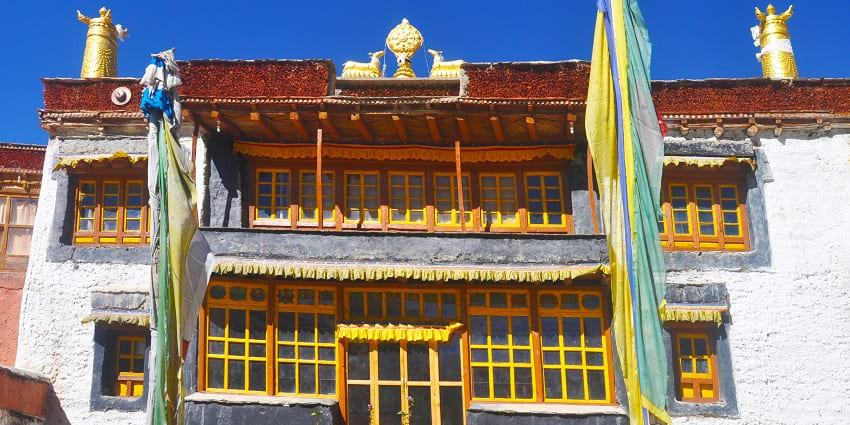
Photo: Prof Ranga Sai / Wikimedia Commons
Stongdey (or Stongde) is the second largest monastery in Zanskar, situated on a rocky outcrop overlooking the Stod Valley. Founded in the 11th century by the famous Tibetan scholar and translator, Lostawa Rinchen Zangpo, it belongs to the Gelugpa sect. The monastery is renowned for its collection of ancient texts, beautiful thangkas (Buddhist painted scrolls), and intricate murals. The main prayer hall houses a large statue of Maitreya, the future Buddha.
Distance From Padum: Approximately 20 km
Suggested Read: Places To Visit In Ladakh
4. Zangla Monastery
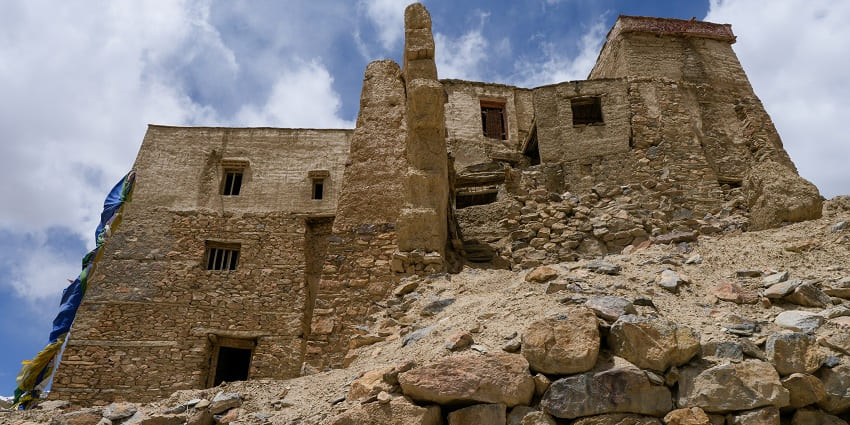
Photo: Timothy A. Gonsalves. / Wikimedia Commons
Zangla Monastery is part of a larger complex that includes the ruins of the ancient Zangla Palace, once the seat of the Zangla kingdom. The monastery itself is relatively small but rich in history and spiritual significance. The gompa houses several important artifacts, including ancient manuscripts and thangkas. Its prayer hall contains beautiful murals and statues of various Buddhist deities. What makes Zangla particularly interesting is its connection to the famous Hungarian-British explorer Alexander Csoma de Kőrös, who lived and studied here in the 1820s.
Distance From Padum: About 35 km
5. Sani Monastery
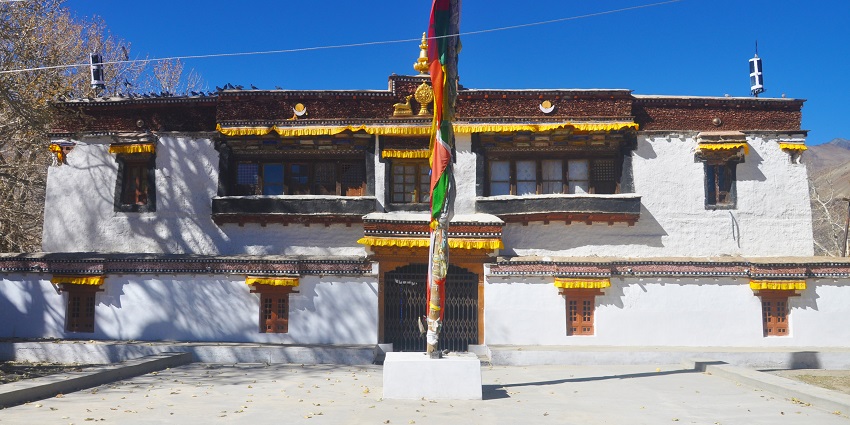
Photo: Prof Ranga Sai / Wikimedia Commons
Sani is one of the oldest monasteries in Zanskar, with parts of it dating back to the 1st century CE. The monastery is famous for housing the Kanika Stupa, believed to have been built by the Kushan emperor Kanishka. This stupa is considered one of the holiest sites in Zanskar. Sani belongs to the Drukpa Kagyu school of Tibetan Buddhism and is associated with the Indian scholar Padmasambhava, who is said to have meditated here. One of the highlights of Sani is the Naro-Nasjal festival, held annually in July or August.
Distance From Padum: About 6 km
Suggested Read: Enhance Your Vacation With These Things To Do In Ladakh
6. Dzongkhul Monastery
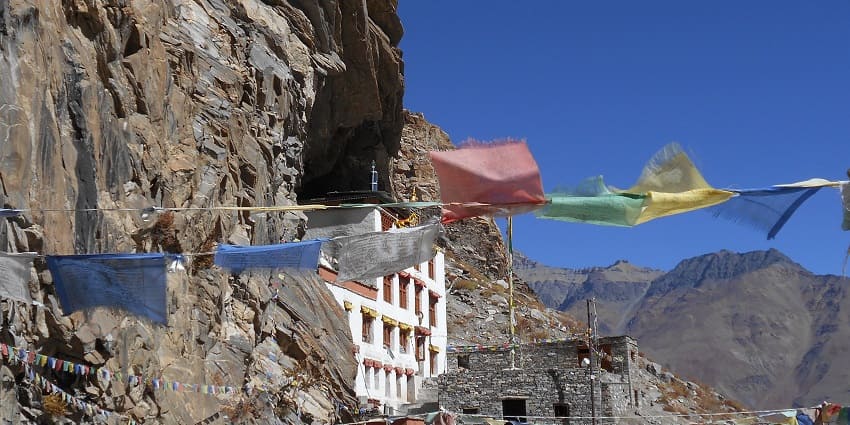
Photo: Prof Ranga Sai / Wikimedia Commons
Dzongkhul, also known as Zongkhul, is a small but significant monastery located in a cave high up on a cliff face. It’s often referred to as the “Monastery of Profound Perfection” and is associated with the famous yogi Naropa. The monastery belongs to the Drukpa Kagyu lineage and is believed to be where Naropa meditated in the 11th century. Inside, visitors can see the cave where he practiced, along with several sacred artifacts and beautiful frescoes. Dzongkhul is known for its tranquil atmosphere and spectacular views of the surrounding landscape.
Distance From Padum: Approximately 40 km
7. Bardan Monastery
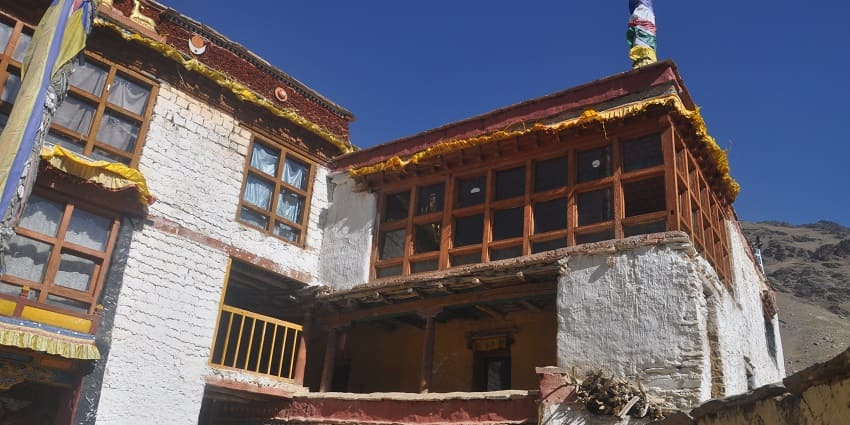
Photo: Prof Ranga Sai / Wikimedia Commons
Bardan (or Bardhan) Monastery sits atop a small hill overlooking the confluence of the Lungnak and Tsarap rivers. Founded in the 17th century, it belongs to the Drukpa Kagyu school of Tibetan Buddhism. The monastery is known for its impressive collection of thangkas, statues, and ancient manuscripts. Its main prayer hall features beautiful murals depicting various Buddhist deities and scenes from the life of the Buddha. Bardan is particularly famous for its mask dances, performed during the annual Bardan festival in July or August.
Distance From Padum: About 12 km
Suggested Read: Discover The Famous Monasteries In Ladakh
8. Mune Monastery
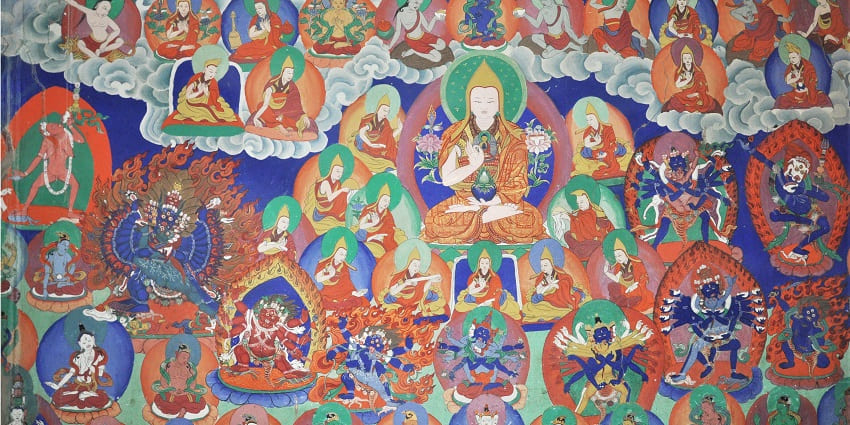
Photo: Prof Ranga Sai / Wikimedia Commons
Mune is a small but historically significant monastery located in the Lungnak Valley. It’s one of the oldest monasteries in Zanskar, with some parts dating back to the 14th century. The monastery belongs to the Drukpa Kagyu lineage and is known for its beautiful frescoes and collection of ancient texts. Mune is particularly famous for its “stone” (actually made of clay and stucco) sculptures of the 84 Mahasiddhas, which are considered some of the finest examples of Buddhist art in the region.
Distance From Padum: Approximately 45 km
9. Rangdum Monastery
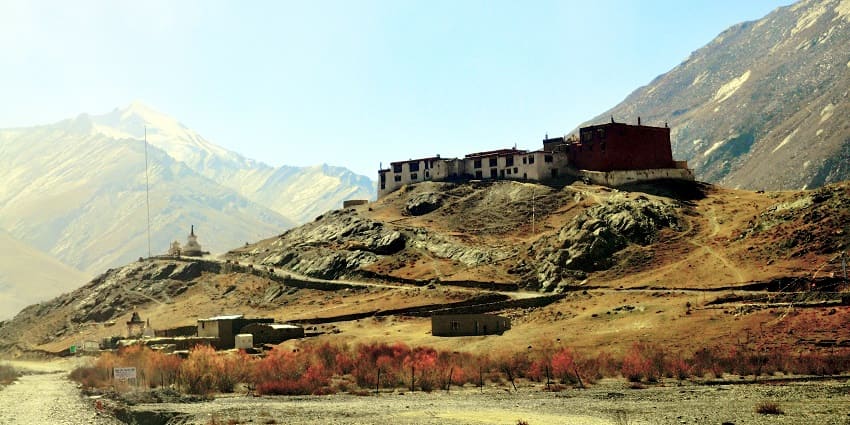
Photo: Prof Ranga Sai / Wikimedia Commons
While technically just outside Zanskar proper, Rangdum Monastery is often included in discussions of Zanskar’s monastery heritage due to its proximity and cultural connections. Perched atop a small hill in the spectacularly desolate Suru Valley, Rangdum offers a stark contrast to its barren surroundings. The monastery belongs to the Gelugpa sect and was founded in the 18th century. Rangdum is known for its impressive collection of Tibetan artifacts, including ancient texts, thangkas, and statues. The main prayer hall features intricate murals and a large statue of Sakyamuni Buddha.
Distance From Padum: About 100 km
Suggested Read: Discover Stok Monastery For A Spiritual Retreat
10. Stagrimo Monastery
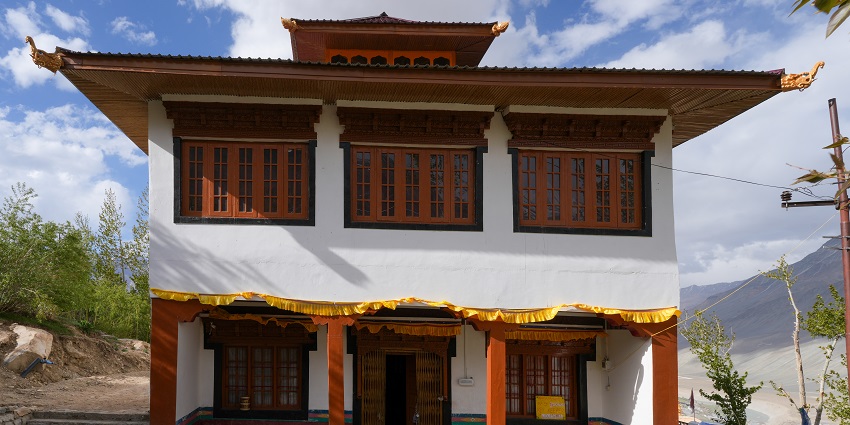
Photo: Timothy A. Gonsalves. / Wikimedia Commons
Stagrimo is a small but picturesque monastery located on a hilltop near the village of Stongde. While less well-known than some of Zanskar’s larger monasteries, it offers a more intimate and less touristy experience. The monastery belongs to the Drukpa Kagyu school and is known for its peaceful atmosphere and beautiful views of the Stod Valley. Its main prayer hall contains colorful murals and several important Buddhist statues. Stagrimo is particularly famous for its meditation caves, where monks and pilgrims have practiced for centuries.
Distance From Padum: Approximately 18 km
Zanskar monasteries stand as enduring symbols of Buddhist faith and Ladakhi culture. Each offers unique insights into the region’s spiritual practices, artistic traditions, and stunning natural beauty. Whether you’re a spiritual seeker, history enthusiast, or adventure traveler, these monastic treasures promise unforgettable experiences. As you plan your next trip to Ladakh, let TripXL shoulder the burden of bookings and the best deals!
Cover Photo: Srishtisudhassk / Wikimedia Commons


 WhatsApp
WhatsApp
 Twitter
Twitter









